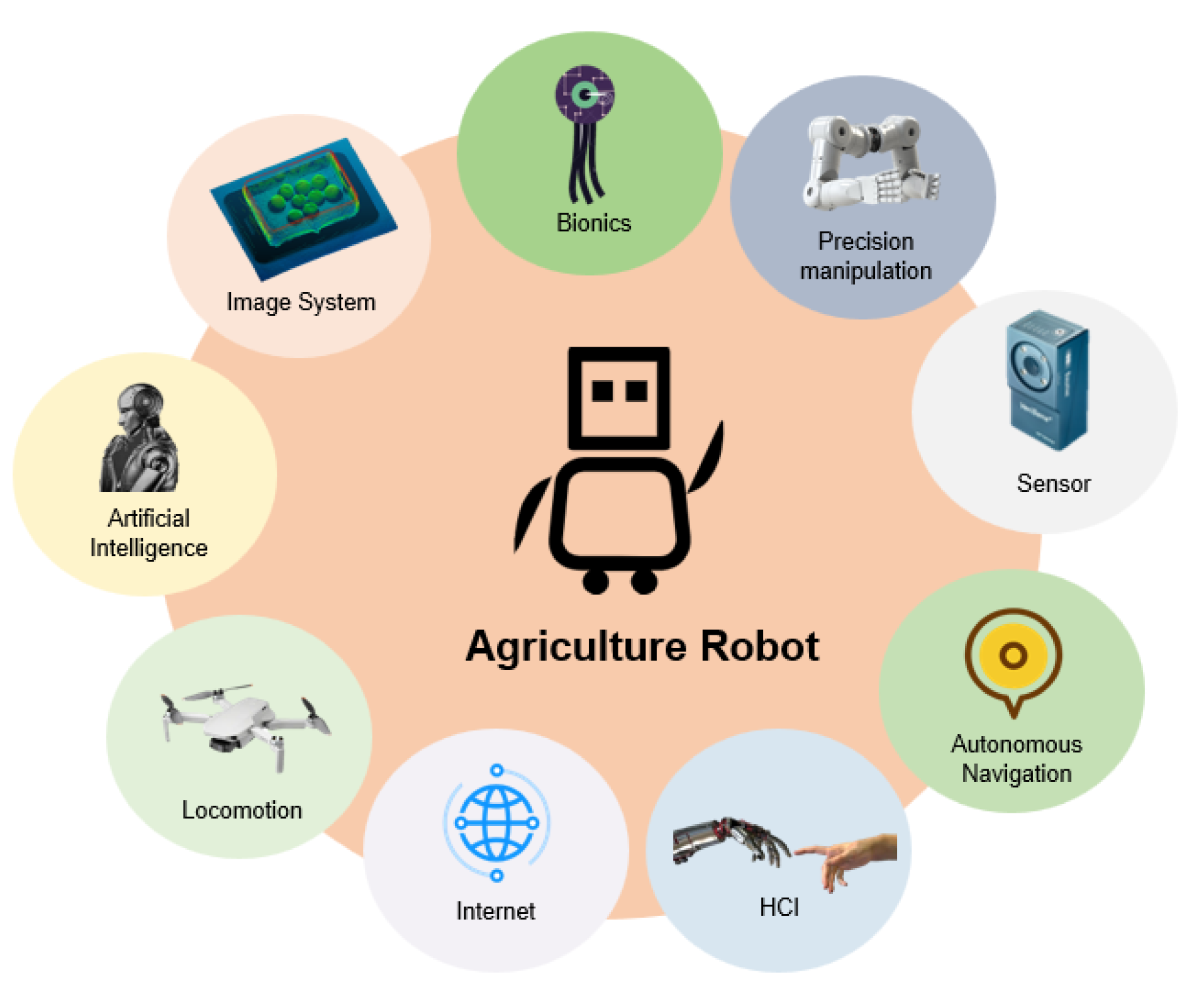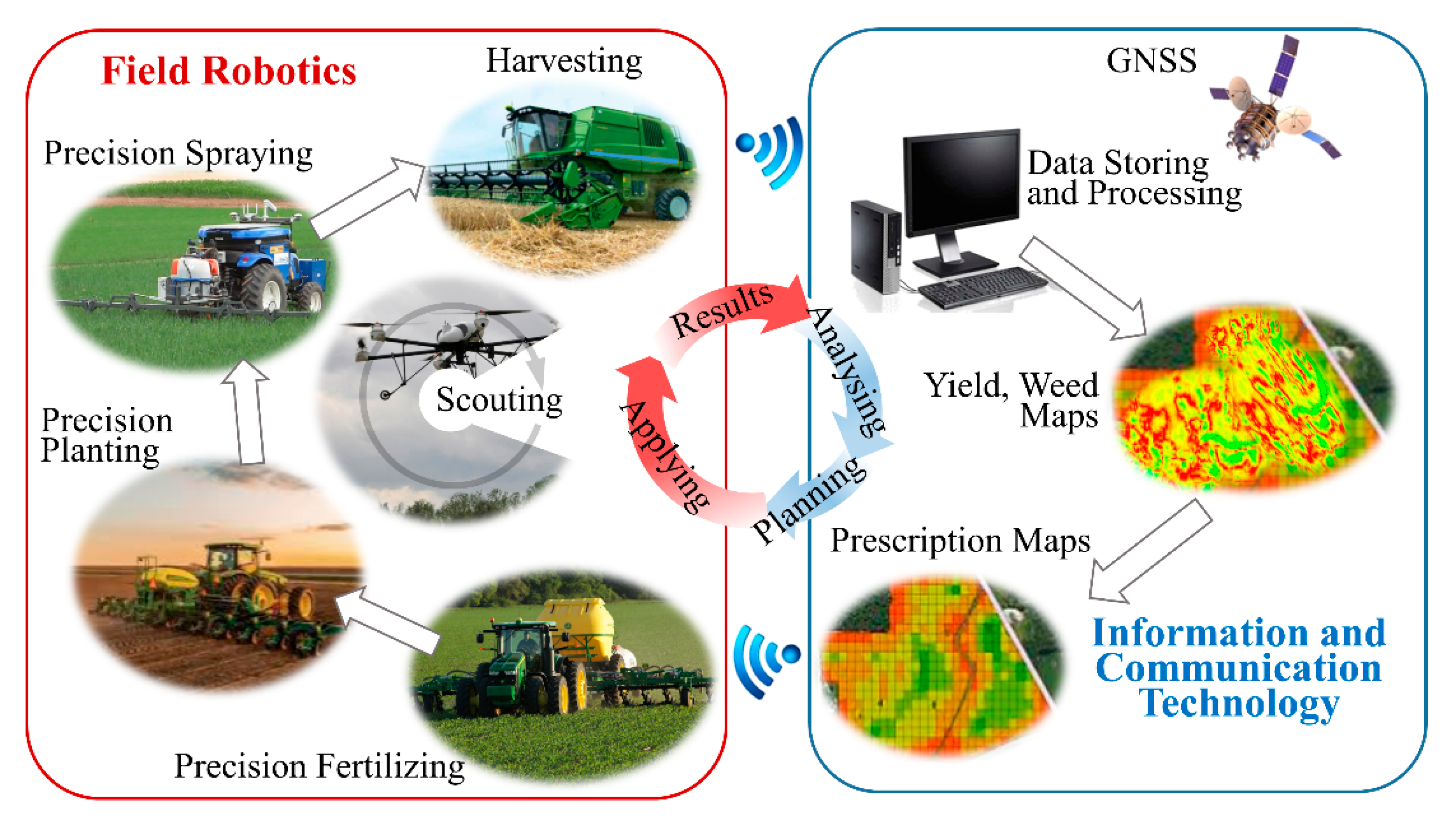Imagine a world where your farm operates almost entirely on its own. Robots plant, drones monitor, and machinery harvests.
This isn’t science fiction—it’s the new reality in agriculture, thanks to the latest trends in agri robotics and automation. You might be wondering how these innovations can change your farming operations and what benefits they bring. You’ll discover the groundbreaking technologies transforming agriculture and how they can revolutionize your approach.
Dive in to learn how to stay ahead in a rapidly evolving industry and ensure your farm thrives in the future.

Innovative Agri Robotics
Innovative agri robotics are transforming farming practices worldwide. These technologies aim to enhance productivity and efficiency in agriculture. Robots are now performing tasks that were once manual and labor-intensive. This shift is helping farmers to meet the growing food demands. Agri robotics offer precision and speed in farming operations.
Advanced Sensor Technologies
Robots equipped with advanced sensors can analyze soil conditions. They collect data on moisture, nutrients, and pH levels. This information helps farmers make informed decisions. Precision farming becomes possible with accurate data.
Automated Harvesting Systems
Automated harvesting systems are gaining popularity. They use robotic arms and cameras to pick fruits and vegetables. These systems reduce waste and improve quality. Harvesting is faster and more efficient.
Drone Applications In Agriculture
Drones offer aerial views of large fields. They help in monitoring crop health and growth. Drones can spray fertilizers and pesticides with precision. This reduces chemical usage and protects the environment.
Ai In Farm Management
Artificial intelligence enhances farm management processes. AI analyzes patterns and predicts weather changes. It helps in planning irrigation schedules and planting times. AI tools improve decision-making and reduce risks.
Robotic Weed Control
Robots can identify and remove weeds autonomously. They use sensors and machine vision to target unwanted plants. This reduces reliance on chemical herbicides. Robotic weed control promotes sustainable farming practices.
Smart Irrigation Systems
Smart irrigation systems optimize water usage. They use sensors to monitor soil moisture levels. These systems deliver water precisely when needed. Efficient water management conserves resources.
Automation In Crop Management
Automation in crop management is transforming agriculture. It uses technology to improve efficiency. Farmers can now manage crops with precision. This leads to healthier plants and better yields. The latest trends in agri robotics focus on automation. This helps farmers save time and resources.
Smart Irrigation Systems
Smart irrigation systems use sensors to monitor soil moisture. They adjust water levels based on plant needs. This reduces water waste and promotes healthy growth. Farmers can control these systems remotely. This makes managing large fields easier.
Automated Pest Control
Pests can damage crops and reduce yields. Automated pest control systems detect and target pests early. They use drones and sensors to monitor fields. This leads to timely interventions and healthier plants. Farmers can reduce chemical use and protect the environment.
Precision Planting Technology
Precision planting technology helps plant seeds accurately. This ensures optimal spacing and depth for each seed. Farmers can achieve uniform growth and improve yields. Machines equipped with this technology work quickly. This saves time during the planting season.
Robotic Harvesting
Robots are now used for harvesting crops. They pick fruits and vegetables with precision. This reduces damage and increases efficiency. Farmers can harvest crops faster and with less labor. Robotic harvesting is ideal for large farms.
Data-driven Crop Management
Data-driven crop management uses real-time information. Sensors collect data on weather, soil, and plant health. Farmers analyze this data to make informed decisions. This leads to better crop management and higher yields. Automation makes this process seamless.
Smart Harvesting Technologies
Smart Harvesting Technologies are transforming agriculture. These innovations enhance efficiency and productivity. Farmers use these technologies to address labor shortages. They also aim to improve crop yields and quality.
Automated Harvesting Machines
Automated harvesting machines reduce manual labor. They use sensors and cameras to identify ripe crops. This technology ensures only mature produce gets harvested. It minimizes waste and increases efficiency.
Robotic Fruit Pickers
Robotic fruit pickers are gaining popularity. They gently pick fruits without causing damage. These robots work day and night, boosting productivity. Farmers find them useful for delicate fruits like strawberries.
Ai-powered Harvesting Systems
AI-powered systems are changing farming. They analyze data to determine the best harvest time. This technology increases crop quality. It helps farmers make informed decisions, leading to better outcomes.
Drone-assisted Harvesting
Drones assist in monitoring and harvesting. They provide aerial views of fields. Drones identify ripe crops and assess field conditions. This technology saves time and reduces labor costs.
Precision Harvesting Techniques
Precision harvesting focuses on efficiency. It uses technology to target specific areas for harvest. This reduces wastage and optimizes resource use. Farmers achieve higher yields with less effort.

Challenges And Future Prospects
Agri robotics faces challenges like high costs and technology adaptation. Farmers need training to use advanced equipment efficiently. Future prospects are promising with innovations in precision farming and smart sensors. Robotics can improve crop yield, reduce labor, and enhance sustainability, paving the way for smarter agriculture.
In the world of agriculture, robotics and automation are rapidly transforming how we grow and harvest crops. But as with any innovation, these advancements come with their own set of challenges and future prospects. You might be wondering, what are the obstacles farmers face with this new technology? And how will these technologies shape the future of farming?Challenges In Agri Robotics
Farmers often face the high cost of implementing robotic solutions. Advanced robots and automation systems can require a significant initial investment. This can be a barrier, especially for small-scale farmers who have limited financial resources. Another challenge is the lack of skilled labor to operate and maintain these high-tech systems. While robots might handle tasks efficiently, they still need human supervision. Training workers to manage this technology can be time-consuming and expensive. Additionally, there are concerns about the adaptability of robots to different agricultural environments. Weather conditions, soil types, and crop varieties can vary widely. Designing robots that can operate effectively across these diverse conditions is a complex task.Future Prospects Of Agri Robotics
Despite these challenges, the future of agri robotics looks promising. Technological advancements are steadily reducing the cost of robotic solutions. As technology becomes more affordable, even smaller farms might soon benefit from automation. The development of AI and machine learning is improving the adaptability of agricultural robots. These technologies enable robots to learn from their environments, making them more efficient over time. This means they can better handle the variety of challenges presented by different farming conditions. Robotic systems are also being designed to work collaboratively with humans. This human-robot partnership can increase efficiency and productivity on farms. Have you ever thought about how robots can take over repetitive tasks, allowing farmers to focus on strategy and decision-making? In the coming years, you might see more community-driven approaches to implementing agri robotics. Farmers could collaborate to share resources and knowledge, making technology more accessible to everyone. This could lead to a more sustainable and efficient agricultural sector. Ultimately, the future of agri robotics holds immense potential. But it’s important to address current challenges to fully realize the benefits of this transformative technology. Are you ready to embrace the future of farming with open arms?
Conclusion
Agri robotics and automation transform farming with efficiency and precision. Farmers save time and reduce labor costs. Technology helps monitor crops and livestock effectively. Robotics increase productivity and support sustainable farming practices. The future of farming looks bright with these innovations.
Embracing these trends ensures better yields and resource management. Farmers can adapt and thrive in this evolving landscape. Stay informed and leverage advancements for improved farm operations. The world of agri robotics holds exciting possibilities for everyone in agriculture.


